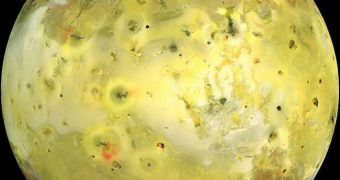When selecting the extrasolar planets most likely to support life, astrobiologists should consider objects with intense levels of volcanic activity as prime candidates. Researchers in the United States say that sulfurous compounds released by volcanoes may be like oxygen for lifeforms.
While it may be inconceivable for humans or other complex animals to live on such worlds, things are very different when it comes to microorganisms. For bacteria, developing a metabolism capable of processing sulfur rather than oxygen should be easy.
On Earth, numerous species living in this manner have already been identified, and experts say that evolution may have taken the same course on other planets as well. As such, searching their atmosphere for sulfurous compounds may represent the first step in finding alien life.
The team behind the new study, which is based at the Massachusetts Institute of Technology (MIT), in Cambridge, gives the example of the Jovian moon Io, which is the most volcanically-active body in our solar system. More than 400 active volcanoes have already been identified there.
These monstrous volcanoes spew out massive ash clouds, that can reach altitudes of up to 180 miles above the surface. Similarly, the lava flows they produce can travel in excess of 300 miles before finally solidifying, Daily Galaxy reports.
MIT planetary science doctoral student Renyu Hu is convinces that we could develop the technology needed to search other planets for sulfurous compounds. He bases his belief on a series of models of Earth-analog exoplanets, that orbit inside the habitable zone of their parent stars.
Their simulation reveal the existence of bodies with an extremely nitrogen-rich atmosphere, that also features about 1,000 times more sulfur than Earth's atmosphere does. However, distinguishing hydrogen sulfide (H2S) from water (H2O) from so far away is very challenging.
“Hydrogen sulfide emissions from the surface would have a large impact on the atmospheric composition of a planet. Characterization of the atmospheres of exoplanets has been confined to close-in planets so far,” Hu explains.
“We need to test our assumptions thoroughly [before jumping to conclusions]. It may be, for instance, that volcanism could produce tremendous amounts of that gas,” the researcher explains.
“We want to study as many [exoplanets] as possible – look at many, many gases in Earth's atmosphere and see if they can be biosignatures as well,” he concludes.

 14 DAY TRIAL //
14 DAY TRIAL //